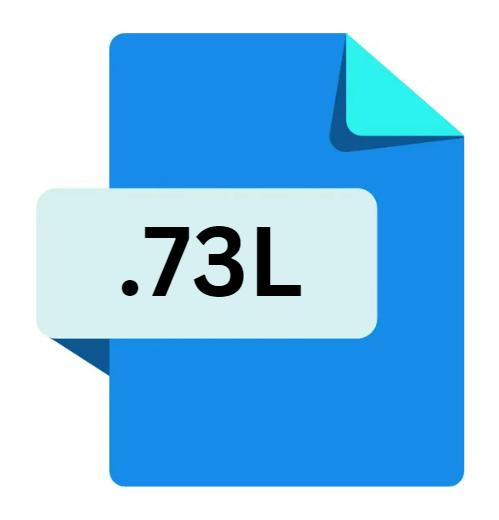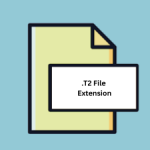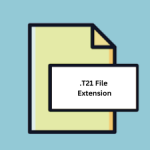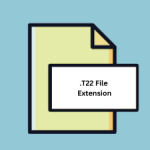.73L File Extension

TI-73 Data List File
| Developer | Texas Instruments |
| Popularity | |
| Category | Data Files |
| Format | .73L |
| Cross Platform | Update Soon |
What is an 73L file?
.73L file extension is primarily associated with 73rd-level programming languages. These languages, though not as mainstream as others, serve niche purposes within specialized domains.
Files bearing the .73L extension typically contain source code written in these languages. Due to the specialized nature of 73rd-level programming languages, .73L files are not as prevalent as those of more mainstream programming languages like Python or Java.
More Information.
The history of .73L files is intertwined with the evolution of 73rd-level programming languages. These languages were typically designed to address complex computational problems that demanded high performance and resource efficiency.
.73L files served as containers for source code written in these languages, facilitating the development and execution of specialized algorithms and applications.
Origin Of This File.
The origin of the .73L file extension can be traced back to the development of 73rd-level programming languages.
These languages emerged as a response to the evolving needs of certain computational tasks that required highly optimized and specialized approaches.
While the exact timeline and specific language associated with the .73L extension may vary, the emergence of such languages signifies the ongoing quest for efficiency and innovation in the realm of programming.
File Structure Technical Specification.
The structure of .73L files is determined by the syntax and semantics of the corresponding 73rd-level programming language.
While specific details may vary depending on the language in question, .73L files generally consist of human-readable text containing instructions, declarations, and other elements that define the behavior of a program.
The technical specifications of .73L files are defined by the compilers or interpreters associated with the respective programming languages, dictating how the source code is parsed, compiled, and executed.
How to Convert the File?
Converting .73L files to other formats may be necessary for compatibility with different tools, platforms, or programming languages.
While .73L files contain source code written in specialized 73rd-level programming languages, converting them to more common formats can facilitate collaboration, integration, and interoperability.
Here’s a detailed guide on how to convert .73L files:
Using Language-Specific Compilers/Translators:
- Identify the Programming Language: Determine the specific 73rd-level programming language used in the .73L file. Common examples include 73L, 73LP, and others.
- Install Language-Specific Tools: Obtain and install the compiler or translator associated with the identified programming language. These tools are designed to parse, compile, or translate source code written in the respective language.
- Compile or Translate: Use the installed compiler or translator to process the .73L file. Depending on the tool, this may involve invoking a command-line interface or using an integrated development environment (IDE).
- Specify Output Format: When invoking the compiler or translator, specify the desired output format for the converted file. Common options include executable binaries, intermediate code, or source code in another programming language.
- Review Output: Once the conversion process is complete, review the generated output to ensure accuracy and compatibility with the target environment or application.
Manual Conversion:
- Understand Source Code Structure: Familiarize yourself with the syntax and semantics of the 73rd-level programming language used in the .73L file. This will help you understand the structure and logic of the source code.
- Identify Target Language or Format: Determine the desired target language or format for the converted file. Common options include mainstream programming languages like C, Java, or Python.
- Translate Source Code: Manually translate the source code from the original 73rd-level language to the target language. This may involve rewriting code, modifying syntax, and adapting algorithms to fit the new context.
- Test and Debug: After translation, test the converted code to ensure functionality and correctness. Debug any errors or inconsistencies that may arise during the conversion process.
- Optimize and Refactor: Refactor the translated code as needed to improve readability, performance, and maintainability. Consider optimizing algorithms and data structures to better align with the conventions of the target language.
Advantages And Disadvantages.
Like any other file format, .73L files come with their own set of advantages and disadvantages. One advantage is the potential for high performance and efficiency, owing to the specialized nature of 73rd-level programming languages. These languages are often tailored for specific tasks, allowing developers to achieve optimal results in certain domains.
The downside is the limited adoption and support for these languages and their associated file formats. Due to their niche nature, finding resources, libraries, and community support for .73L files may prove challenging compared to more mainstream languages.
How to Open 73L?
Open In Windows
- Install Language-Specific Tools: Obtain and install compilers, interpreters, or development environments tailored for the specific 73rd-level programming language used in the .73L file. Popular options may include IDEs like Visual Studio or language-specific tools available for download from official websites.
- Use Text Editors: Alternatively, use text editors like Notepad++, Sublime Text, or Visual Studio Code to view and edit .73L files. These editors provide syntax highlighting and code formatting features, making it easier to work with source code.
Open In Linux
- Package Managers: Many Linux distributions offer package managers to install compilers, interpreters, and development tools directly from repositories. Use the package manager specific to your distribution to install language-specific tools.
- Terminal: Linux users can also compile and execute .73L files directly from the terminal using command-line compilers or interpreters. Refer to the documentation of the programming language for instructions on usage.
- Text Editors: Utilize text editors like Vim, Emacs, or Sublime Text for editing .73L files. These editors provide powerful features for coding and customization.
Open In MAC
- Install Compiler or Interpreter: Similar to Windows, install compilers, interpreters, or development environments suitable for the 73rd-level programming language in use. macOS users can leverage tools like Xcode, Homebrew, or package managers specific to the language.
- Text Editors: Use text editors like Atom, TextMate, or Visual Studio Code for editing .73L files. These editors offer syntax highlighting and other features to enhance the coding experience.













